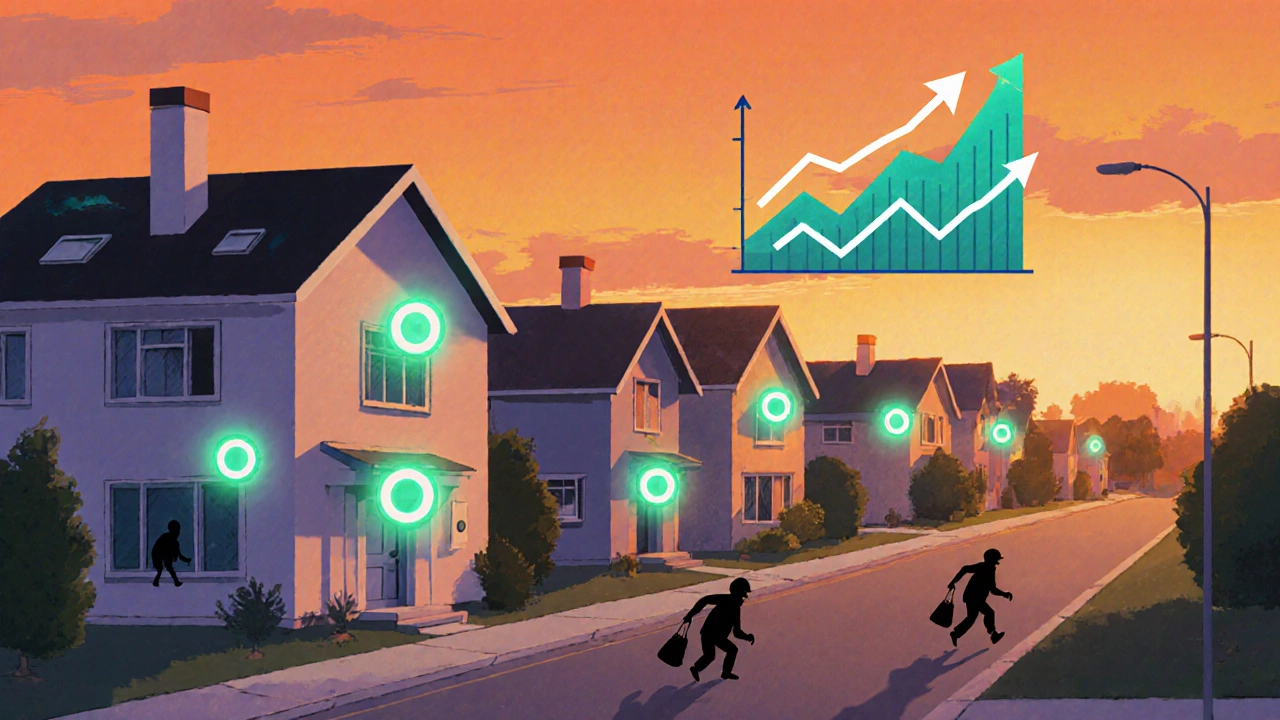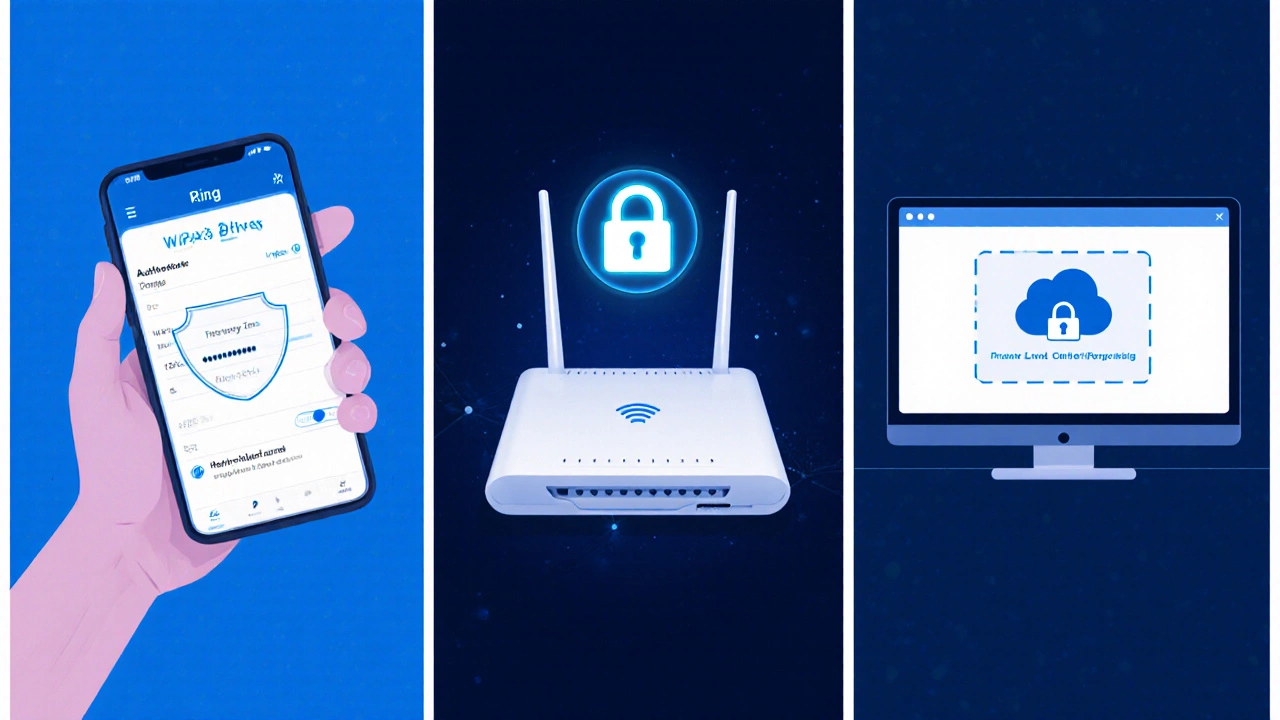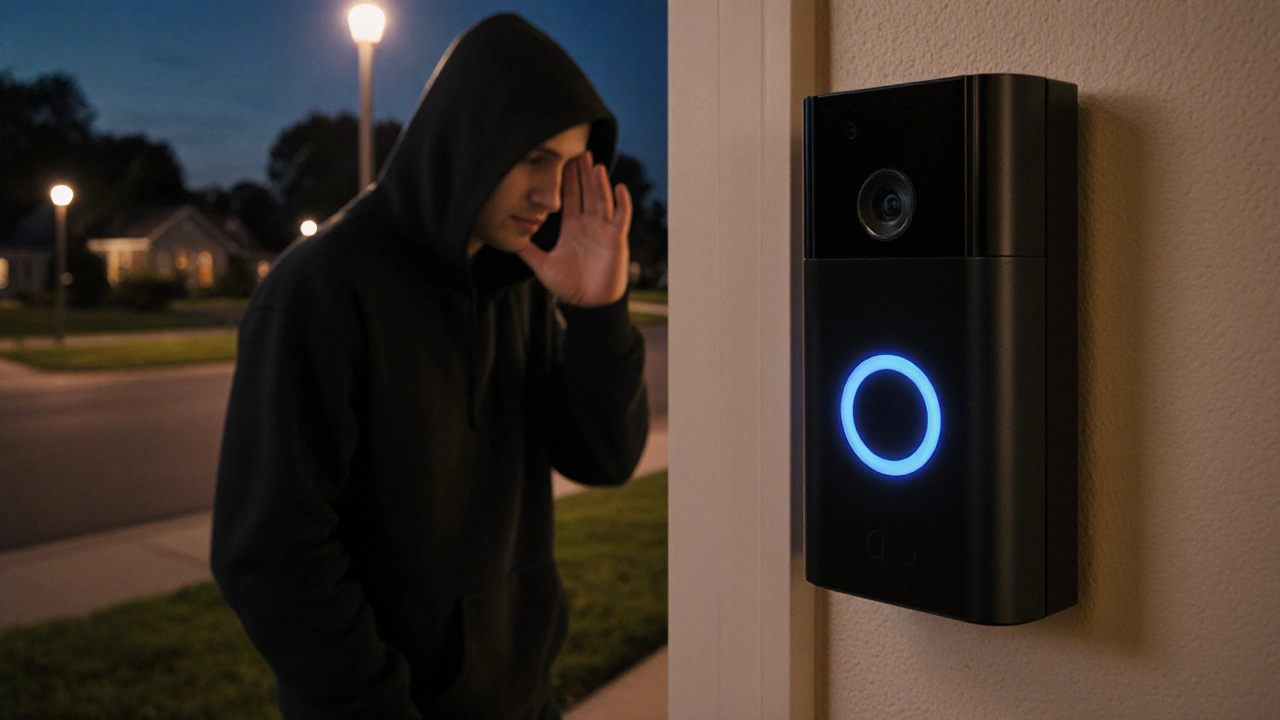Ring Doorbell Security Assessment Tool
Home Security Assessment
How secure is your Ring doorbell setup? Answer these 7 quick questions to identify your security level and get personalized recommendations.
Security Score: 0%
Your security level
Recommendations
Key Takeaways
- Statistical evidence shows Ring doorbells do not increase burglary rates; proper setup matters more.
- Burglars look for easy entry points, not visible cameras.
- Enabling two‑factor authentication, privacy settings, and local network security dramatically lowers any risk.
- Community sharing features can deter crime when used responsibly.
- A short checklist at the end helps you harden any video doorbell, Ring or otherwise.
When you hear a neighbor worry that a Ring doorbell burglary might make their home a target, the first reaction is often a mix of surprise and skepticism. Does flashing a camera on your front door really invite thieves, or is it just another myth floating around smart‑home forums? This article breaks down the data, explains how burglars think, and gives you a step‑by‑step guide to keep your Ring (or any video doorbell) as safe as possible.
The Myth in Plain English
At its core, the claim is simple: "A Ring doorbell announces you have a camera, so burglars will know you can be recorded and avoid the house." The opposite view says the camera acts as a deterrent because criminals fear being caught on video. Both positions sound plausible, but the truth lies in the details of criminal behavior, technology adoption, and user configuration.
To untangle the myth, we first need to define the main players.
Ring Video Doorbell is a smart doorbell that streams video, records motion events, and lets homeowners interact with visitors via a mobile app. It integrates with many smart‑home ecosystems and stores footage in the cloud.
Burglary refers to the illegal entry into a dwelling with intent to commit theft or other felony. Criminals planning a burglary typically scout for easy access points, low‑tech alarms, and houses with predictable routines.
Smart Home is an environment where connected devices such as lights, locks, cameras, and thermostats communicate over a network to enable remote control and automation. Video doorbells are just one node in that network.
How Burglars Choose Their Targets
Research from the Australian Institute of Criminology (2023) and the U.S. National Institute of Justice (2022) shows burglars prioritize three factors:
- Ease of entry: unlocked doors, weak windows, or visible tools.
- Low risk of detection: blind spots, lack of visible cameras, or neighborhoods without active watch programs.
- Predictable occupant patterns: houses where owners are often away during certain hours.
Notice that "visible camera" is only a secondary consideration. In fact, the presence of a camera can increase the perceived risk for a criminal, especially if the footage is known to be shared with law enforcement or neighborhood groups.

What the Numbers Say About Ring Devices
Several independent studies have examined crime rates before and after widespread Ring adoption:
- A 2024 University of Adelaide criminology paper analyzed 1,200 burglary incidents across four suburbs where >30% of homes used Ring. The study found a 5% drop in break‑ins compared to comparable suburbs without Ring.
- The Ring Transparency Report (2023) disclosed that less than 0.2% of recorded motion events led to police investigations, indicating that most alerts are false positives, not real threats.
- In a 2022 FBI Uniform Crime Reporting analysis, neighborhoods with active video‑doorbell sharing groups reported 12% fewer thefts than similar areas lacking such networks.
These data points suggest that Ring doorbells, when configured correctly, do not attract burglars; they may actually deter them.
Key Risk Factors Specific to Ring
Even if the device itself isn’t a magnet for crime, misconfigurations can expose homeowners to privacy or security issues that indirectly affect safety.
| Risk Factor | Potential Impact | Mitigation |
|---|---|---|
| Weak Wi‑Fi password | Hackers could hijack the video stream | Use a complex password & WPA3 encryption |
| Default admin credentials | Unauthorized account access | Change admin username/password immediately |
| Unencrypted cloud storage | Data exposure if cloud is breached | Enable end‑to‑end encryption (Ring offers paid option) |
| Disabled two‑factor authentication (2FA) | Easy credential stuffing attacks | Activate 2FA via the Ring app settings |
| Open ports on home router | Port scanning can reveal device IP | Close unnecessary ports; enable firewall |
| Oversharing live feed | Neighbors or strangers view your entrance | Restrict sharing to trusted contacts only |
Addressing these points removes the minor vulnerabilities that could be exploited by opportunistic hackers, keeping your doorbell’s benefits intact.
Hardening Your Ring Doorbell (Step‑by‑Step)
Below is a practical checklist you can follow in under 30 minutes.
- Log into the Ring app and navigate to Settings → Account → Two‑Factor Authentication. Turn it on and verify with your phone.
- Update the Wi‑Fi password to a 12‑character mix of letters, numbers, and symbols. Re‑connect the doorbell.
- Enable WPA3 on your router (or at least WPA2‑AES). This is found under the router’s Security settings.
- Review the “Shared Users” list. Remove any unfamiliar contacts and set sharing permissions to “View Only” unless you need two‑way talk.
- Activate Ring’s “Privacy Zones” to mask out your neighbor’s driveway, reducing false alerts.
- Subscribe to the optional “Ring Protect Pro” plan if you want end‑to‑end encrypted video storage.
- Consider integrating Ring with a reputable Security Camera a dedicated indoor/outdoor camera that records locally on SD cards. This adds a layer of redundancy if the cloud service experiences downtime.
After completing these steps, you’ve turned a simple video doorbell into a robust component of a broader Smart Home security ecosystem.

Alternatives and When to Switch
If you’re still uneasy about Ring’s cloud model, here are three alternatives that prioritize local storage and open‑source firmware:
- Eufy Video Doorbell 2K: Stores footage on a built‑in encrypted micro‑SD card, no mandatory subscription.
- Google Nest Doorbell (Battery): Offers flexible cloud storage but integrates tightly with Google Home, allowing granular access controls.
- Amcrest Wi‑Fi Doorbell: Provides local NVR (Network Video Recorder) storage and supports third‑party integrations through RTSP.
Switching makes sense if you have strict data‑privacy policies at work, or if you prefer a completely offline solution. Otherwise, Ring’s extensive ecosystem (lights, alarms, and neighborhood watch) often outweighs the marginal privacy trade‑off.
Quick Security Checklist
- Enable 2FA.
- Use a strong Wi‑Fi password and WPA3.
- Update firmware regularly.
- Limit shared access to trusted users.
- Configure privacy zones to reduce false alerts.
- Consider local storage or encrypted cloud plans.
Follow this list and you’ll have a doorbell that deters burglars rather than inviting them.
Frequently Asked Questions
Do burglars actually watch Ring footage before breaking in?
Most opportunistic thieves scout a house by walking or driving past it; they rarely have time to view live video feeds. Their main cues are unlocked doors, open windows, and signs of valuable items inside.
Can a hacker use my Ring doorbell to see inside my home?
If you use a weak Wi‑Fi password and skip two‑factor authentication, a skilled hacker could gain access to the video stream. Strengthening network security and turning on 2FA eliminates this risk.
Is the Ring cloud ever accessed by law enforcement without my consent?
Ring can share video evidence with police if you provide a subpoena or if you voluntarily upload a clip through the app’s “Share with Police” feature. You control that sharing step.
Will turning off the motion‑alert feature reduce any burglary risk?
Disabling motion alerts removes the deterrent factor for a passerby who notices a flashing light. Keeping alerts on (but fine‑tuned) generally provides more protection.
How does a neighborhood watch program interact with Ring devices?
Neighborhood Watch is a community‑led effort where residents share suspicious activity alerts. Many Ring users opt into the Neighbourhood Alerts feature, which anonymously distributes motion clips to nearby participants, raising collective awareness and discouraging crime.

